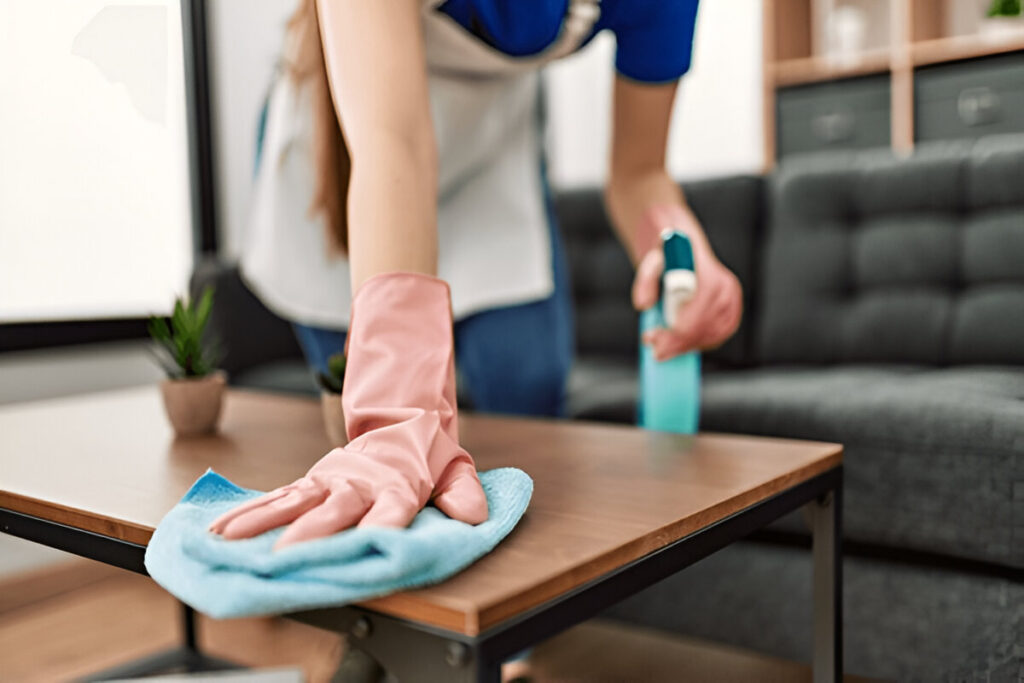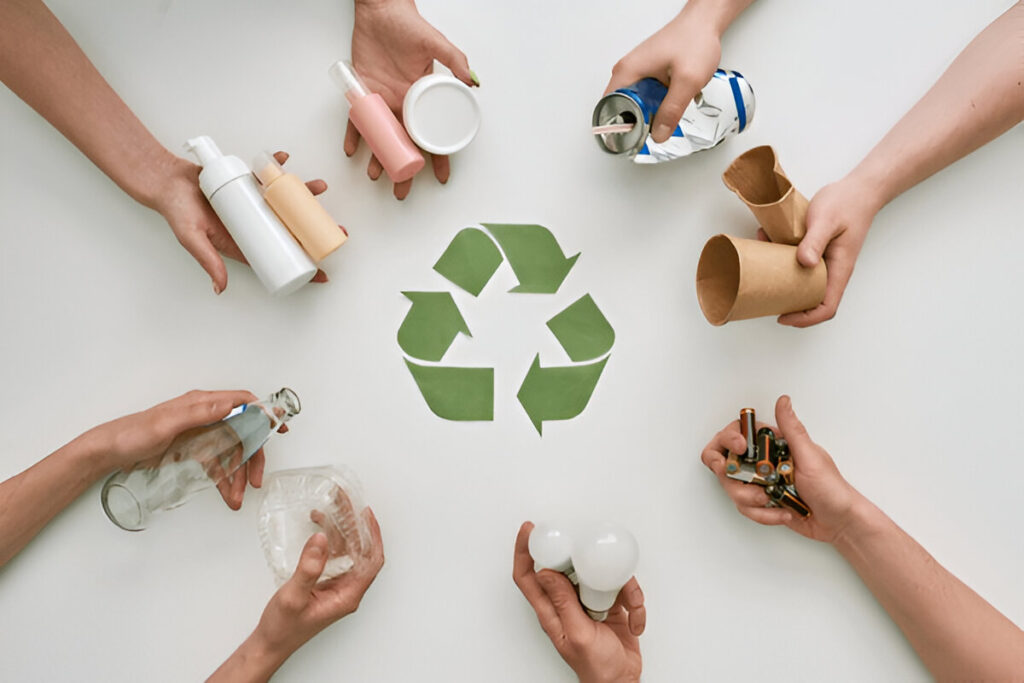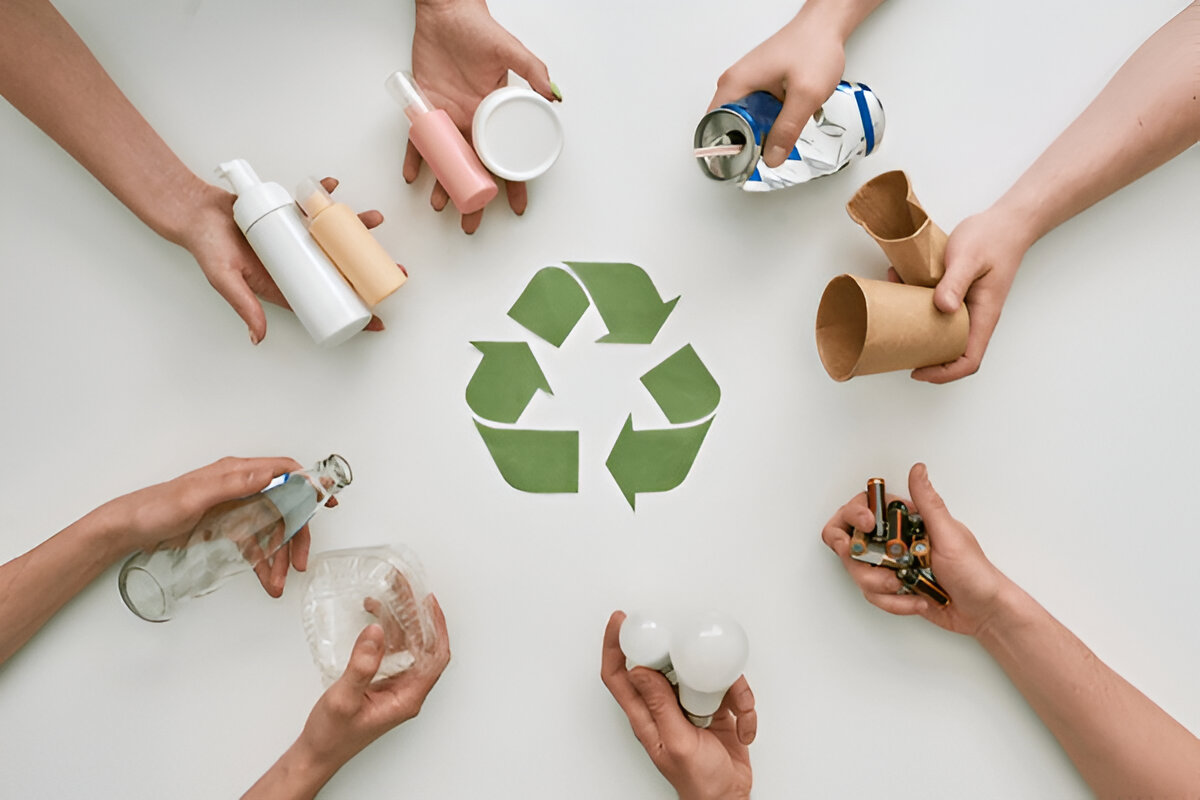Transforming your cleaning routine into an eco‑friendly and sustainable home practice doesn’t require overhauling your life—it starts with small, meaningful swaps that make a big difference. Here are practical, everyday ideas to clean effectively while minimizing environmental impact and promoting reuse and recycle habits.
1. Ditch Plastic, Embrace Refillable Containers
Replace single‑use plastic bottles with reusable glass or aluminum containers. Many cities offer refill stations where you can top up dish soap, cleaners, and laundry detergent in your own bottles—cutting plastic waste and saving money.
2. Reuse Cleaning Cloths, Not Tossables
Swap disposable paper towels or microfiber wipes (which can shed microplastics) for cloth alternatives. Use old t‑shirts, towels, or repurposed cloths that can be washed and reused. Not only does this reduce waste, but it’s also a great way to reuse and recycle materials you already have.

3. Go Natural: Baking Soda, Vinegar & Lemon
Household staples like baking soda, white vinegar, and lemon juice are powerful, eco‑friendly cleaning agents. Baking soda absorbs odors and removes stains, while a water–vinegar mixture works wonders on glass, stainless surfaces, and even as a drain cleaner. Lemon adds fresh scent and natural bleaching power.
4. Use Sustainable Sponges & Brushes
Replace synthetic sponges with biodegradable or natural-fiber alternatives—like cotton, cellulose, or natural sea sponges. These break down naturally or compost easily, unlike plastic-based options.
5. Start Cleaning from the Top Down
Begin with ceilings, shelves, and high surfaces before tackling countertops and floors. This approach prevents redepositing dust and dirt onto areas you’ve already cleaned.
6. Refillable Tools Save Waste
Opt for washers, mop heads, and scrubbers that are washable and replaceable rather than disposable. Mops with washable heads and bagless vacuums with reusable filters keep waste out of landfills and reduce long-term costs.
7. Harness the Power of Plants
Houseplants don’t just brighten your décor—they help purify indoor air by absorbing toxins and supplying oxygen. Choose locally propagated plants to minimize carbon footprint and promote sustainability.
8. Choose Cleanable, Durable Tools
Select eco-conscious cleaning tools crafted from wood or metal instead of plastic. These last longer, perform well, and are easier to compost or recycle at end of life.
9. Opt for Plant‑Powered Cleaners
When buying cleaners, look for eco‑friendly cleaning products with plant-based ingredients and recyclable or refillable packaging. These reduce chemical exposure and usually carry sustainability certifications like EPA Safer Choice.
10. Laundry: Go Cold, Go Minimal
Use cold water laundry cycles and ultra‑concentrated detergents to reduce energy use. Laundry sheets or highly concentrated formulas help cut plastic packaging and transportation emissions.

11. Choose Recyclable or Aluminum Packaging
Pick products with recyclable packaging—or better yet, aluminum containers that can be infinitely recycled and reused. This supports a circular economy and cuts plastic demand.
12. Conserve Water & Energy
Dry laundry outdoors when possible to save energy. Use aerators on faucets. Small changes like washing dishes with minimal water and turning taps off while scrubbing make a difference.
13. Ventilate Daily
Fresh air is vital. Open windows—even briefly—to reduce VOC buildup and stale indoor air. Outdoors air, even in urban settings at quieter times, effectively dilutes indoor pollutants.
14. Maintain Air Filters
Replace HVAC or air filters regularly—every 3 months or more often in high-use periods—to improve airflow, efficiency, and indoor air quality.
15. Natural Pest Prevention
Forego pesticides. Use simple methods like sealing food containers, cleaning up food residue, and using natural deterrents such as cayenne pepper in water sprays to keep bugs at bay.
16. Reuse Water Thoughtfully
When cleaning outdoor furniture or plants, reuse leftover rinse water or collected rainwater to conserve resources.
17. Repair, Don’t Replace
Extend the life of items—like cushions, furniture, or cleaning cloths—through repairs or repurposing, reducing waste and consumption.
FAQ – Green Cleaning for a Sustainable Home

Q1: What’s the simplest swap I can make?
Start by replacing paper towels with reusable cloths and using natural ingredients like baking soda and vinegar for everyday tasks.
Q2: Are eco‑friendly cleaners effective?
Absolutely. Plant-based cleaners with surfactants from coconut or sugar clean just as well—and are safer for your family, pets, and persistence less polluting.
Q3: How can I cut packaging waste?
Refill from eco‑stores, choose concentrates or aluminum packaging, and repurpose containers. Recycling or reusing bottles helps complete the cycle.
Q4: Is cold-water laundry less effective?
Modern detergents are designed for cold water and deliver just as effective a clean—while lowering energy usage and protecting fibers.
Q5: What about indoor air quality while cleaning?
Use low‑VOC, plant-based cleaners, ventilate spaces, and maintain air filters to reduce indoor pollutants and create a healthier environment.
Q6: Can natural ingredients replace all cleaners?
For most tasks—degreasing, dusting, freshening—yes. For tougher jobs, eco‑friendly commercial cleaners are safe, effective, and often biodegradable.
Q7: How do I prevent waste while cleaning?
Use durable tools with washable parts, perform minor repairs, and choose products with minimal or recyclable packaging.
Q8: What’s the benefit of reducing harsh chemicals?
You’ll improve indoor air quality, reduce risk of irritation or allergies, and lower environmental impact—plus, fewer toxins benefit kids, pets, and fertility health.
Final Thoughts
A truly sustainable home involves daily habits that prioritize health, planet, and practicality. By choosing eco‑friendly cleaning, embracing reuse and recycle strategies, and making small shifts like using cold water, repurposing tools, and opting for natural cleaners, you’re building a greener, healthier world—one clean home at a time.







2 responses to “Sustainable Tips for a Clean, Eco-Friendly Home”
[…] home? If so, you need to find a builder or renovation expert who understands the concepts of an eco-friendly home and can source the right products for your build or […]
[…] Sustainable Tips for a Clean, Eco-Friendly HomeAugust 26, 2025 […]